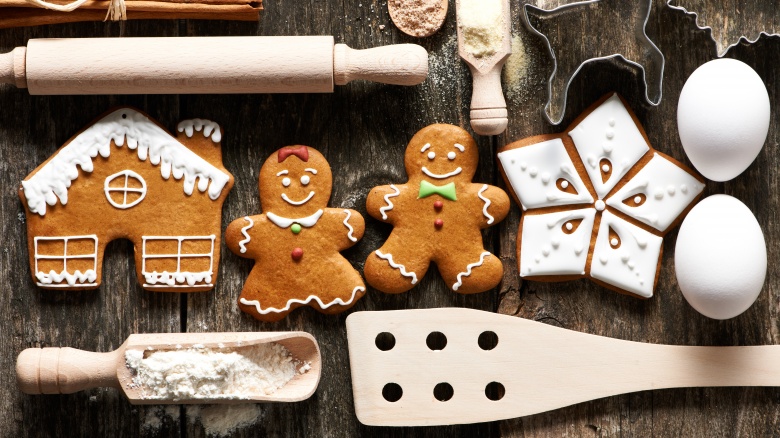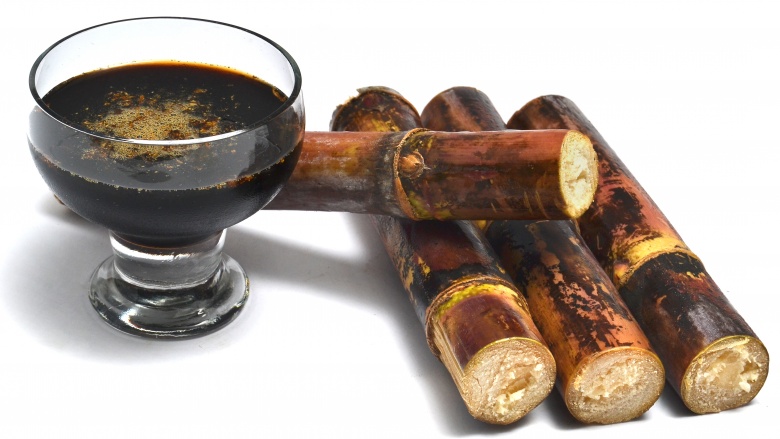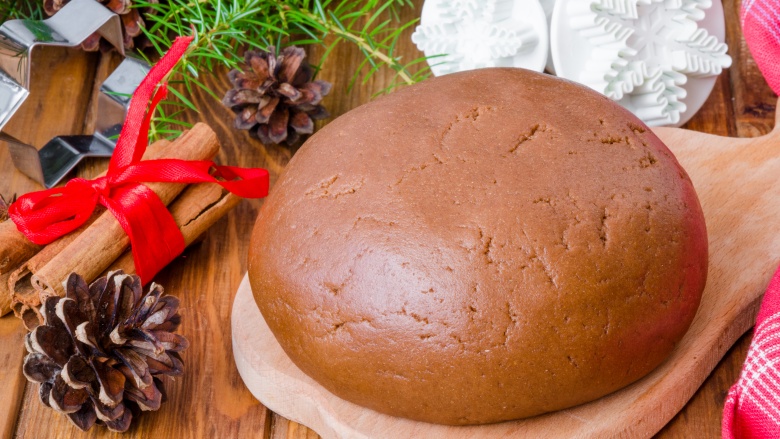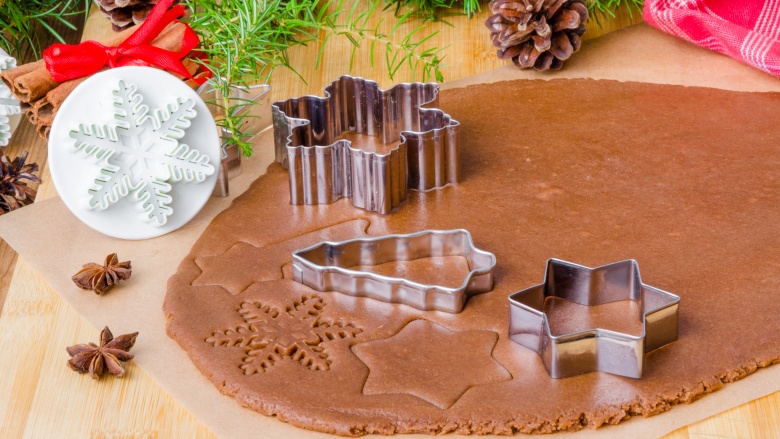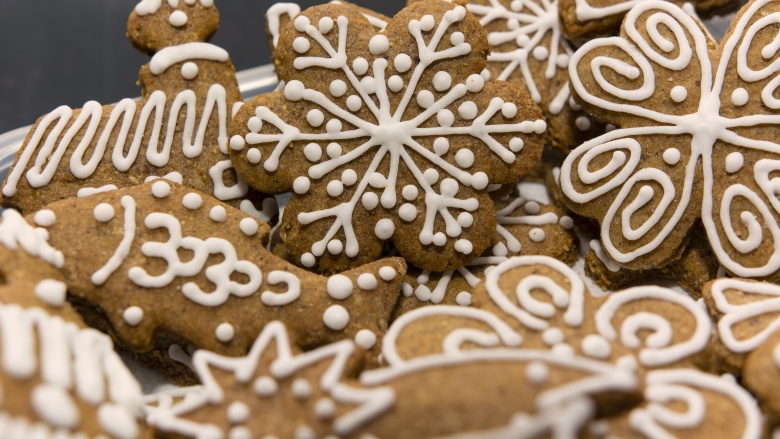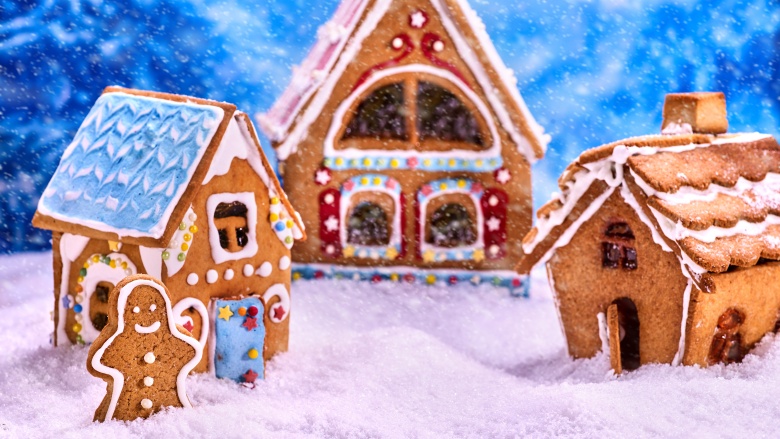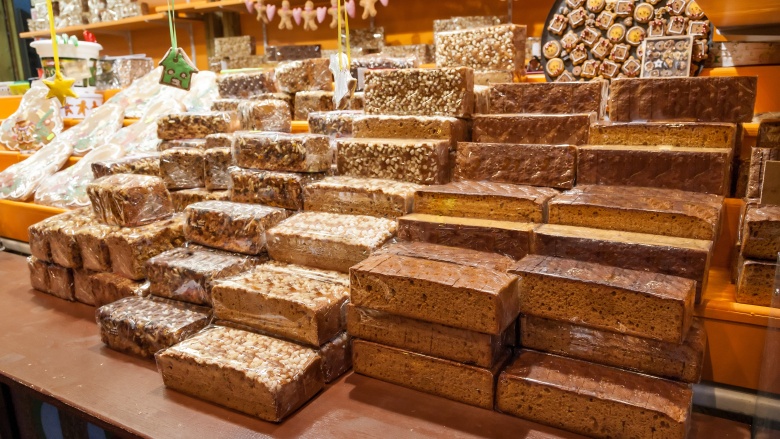Mistakes Everyone Makes When Making Gingerbread
Gingerbread might be the one of the best parts of the holiday season, and it's definitely the best kind of cookie there is. Whether you're making gingerbread men or a gingerbread house, getting it right from the first step is crucial in creating that perfect, finished product. Gingerbread isn't just dessert, after all: it's artwork. In the spirit of the holidays, here are some pitfalls to avoid in making gingerbread treats you'll be proud to give away.
Not using a different recipe for cookies and construction
There's nothing more festive than gingerbread cookies, except perhaps for gingerbread houses. But that's where one huge potential pitfall comes in.
When it comes to cookies, you probably want something that's soft, a little bit chewy, and (above all) tasty. But the recipes that will give you those kinds of cookies aren't the best if you're going to be using your gingerbread to build a house from. Haniela has a great recipe if you're looking to create some gingerbread building materials, and she stresses that the perfect recipe for gingerbread construction should have no leavening agent and bake into hard, firm shapes. When a leavening agent is added to a mix, it creates a tendency for the cookies to want to spread as they bake. That's exactly what you don't want, as your gingerbread house is going to be much, much sturdier if the finished pieces look exactly like they did when you cut them out. It's going to save you a lot of headache down the road, especially when you're at the decorating stage. No one wants to be still mucking about with getting your house to look good when it's time to add the frosting and candies!
If you're making gingerbread cookies for eating, you're going to want a completely different recipe that includes a leavening agent to help them come out soft, like the cookies in this recipe from Wholefully. If you have some go-to favorites of your own, take a look and see if there's that leavening agent in there. Then you'll know just what your final product is going to be best for.
Using the wrong kind of molasses
Molasses is one of those ingredients that might not be taken out of the cupboard or put in the shopping cart all too often, but it's essential for gingerbread. There are a couple different versions of molasses, though, and using the wrong one can ruin your cookies.
Light molasses comes from the first time sugar is boiled, and it's given its name because of its coloring. Dark molasses is similar, but it comes from sugar the second time it's boiled. The light variety is most often used in baking, as it's the sweetest of all the types of molasses suitable for cooking. Dark can also be used, but it's going to give your cookies a less sweet taste.
There's also fancy molasses, but that's more of a syrup than an ingredient. You might see cooking molasses on the shelf, too, and that's a combination of fancy and what's called bootstrap molasses. Picking up a can of bootstrap molasses is going to ruin your entire project (if you plan on eating your cookies, at least), and it's something you absolutely need to stay away from. While light and dark come from the first and second boilings of sugar, bootstrap comes from the third. It's incredibly dark and very, very bitter, used more for savory cooking than sweet. It's great for things like baked beans, but gingerbread cookies? Not so much!
Not chilling the dough
If you're planning on making a batch of gingerbread cookies, you're probably planning on using cookie cutters to make some fun shapes. That's half the fun of gingerbread cookies after all. But there's an extra step you shouldn't skip.
If you want your cookies to come out so perfect the neighbors will be jealous and asking for more, chill your dough before rolling it out. This does a couple of different things, and the most noticeable one will be that it makes the dough much, much easier to roll out. It won't be nearly as sticky, and anyone who's tried to roll out cookie dough before knows that there's only so much that flour can do. (And speaking of, don't forget to use flour when you're rolling out your cookies!)
How long you want to chill your dough depends on how big your batch is. Too cold is just as bad as not cold enough, so aim for about the consistency of Play-Doh. If you're making a lot of cookies, you might need to re-chill your dough halfway through, and if you cut out one batch then reuse the scraps, they might need to be re-chilled. It's crucial!
Using the wrong cookie cutters
Not all cookie cutters are created equal, and using the wrong ones can not only make the whole process more challenging, but it might make your cookies look less-than-ideal, too.
Since gingerbread dough is very firm, you're going to need a cookie cutter that can easily push through the dough and leave a clean cut. You can pick up plastic cookie cutters anywhere, and they're inexpensive and come in fun shapes. That can be tempting, but they're exactly what you don't want. Because their edges are dull, they're going to flatten the dough rather than cut through it, and that's going to leave you with a mess. The more you handle the dough, the tougher your cookies are going to get, so keep it simple.
If you want to get the most out of your baking, invest in some stainless steel cookie cutters. They're going to be a bit more pricey than plastic ones, but they're infinitely better. The sharper edges will cut much cleaner and leave you with a much better-looking cookie, and they're going to last longer than aluminium cookie cutters. (Any rust that develops can be easily removed with sandpaper.) Who knows, they might even become a part of the tradition!
Using the wrong icing
If you're a traditionalist (and who isn't around the holidays?), then your gingerbread cookies just aren't right without those thin strips of icing that complete the whole look of the gingerbread man. Decorating them is as fun as eating them, but if you don't have the right kind of icing, your gingerbread men are going to come out looking more like gingerbread zombies a few years into the apocalypse.
For decorating your little gingerbread people, royal icing is a go-to win. A traditional icing that's not the least bit like the frosting you might usually expect to use on cookies, this easy-to-make recipe only calls for egg whites, icing sugar, glycerin, and lemon juice. (You can check out Mary Berry's recipe here.) If you're not thrilled about the idea of using raw egg in an uncooked product, look for (or make your own) pasteurized eggs.
If you want to make your cookies a little different, you can also add some food coloring, but the pure white of this icing is what makes it so traditional. Royal icing has another advantage, too. Since it dries hard, it won't rub off on other cookies or turn into a goopy mess. If you're using it to decorate a gingerbread house, it's not going to run like other types of icing might. Success!
Using icing as gingerbread house cement
If your home gets a little chaotic during the holidays, the idea of leaving your gingerbread house out on a table might be a little scary. They can take hours to build, after all, and you definitely don't want the whole thing knocked down with a single bump.
According to Erica Kahn of the Brown University School of Engineering (which holds a yearly gingerbread house contest), using icing to hold your gingerbread together is one of the biggest mistakes you can make. What do the professionals use? She recommends melting caramel, gummy bears and marshmallow to create a sugary cement. When some folks at NPR tried it, they found that they could drop their gingerbread house several feet without breaking.
The engineering department at Johns Hopkins also weighed in, and suggested that one crucial part of gingerbread house-building that's often overlooked is making sure everything is cut out properly. Check and double-check to make sure all your corners are perfectly square, which all goes back to making sure you're using the right kinds of tools to cut your gingerbread.
Skipping the old-fashioned recipes
Scour the internet for gingerbread recipes and you'll find a whole bunch of very similar ideas on how to make the perfect gingerbread. Most are a very 21st-century take on what's really an old favorite, and if you love gingerbread you're doing yourself a huge disservice if you don't try some of the old recipes at least once.
Gingerbread dates back to at least the 15th century. Spices were insanely expensive, so it was probably quite the treat. For one of the oldest recipes out there, check out this one from Gode Cookery. This medieval recipe came from a 19th-century cookbook that used two 15th-century manuscripts as its sources. The recipe calls for bread crumbs, honey, and pepper. (Strangely, the ginger is optional.) It's nothing like today's gingerbread, but if you want to be able to serve something truly unique for Christmas, this candy-like, bread-based dessert can be a massive hit.
If you're looking for something more modern, Colonial Williamsburg suggests this recipe from a 1796 cookbook. By now, it's starting to sound a little more familiar with flour, sugar, butter, treacle, cream, and, of course, ginger and nutmeg. And what about trying something with a pretty impressive pedigree? Mount Vernon actually has the gingerbread recipe that belonged to George Washington's mother, Mary Ball Washington. According to to the story, Mother Washington once served it to the Marquis de Lafayette, and he was such a fan that it's now known as Lafayette Gingerbread. The holidays are a time for tradition and family, after all, so try your hand at some old favorites.

